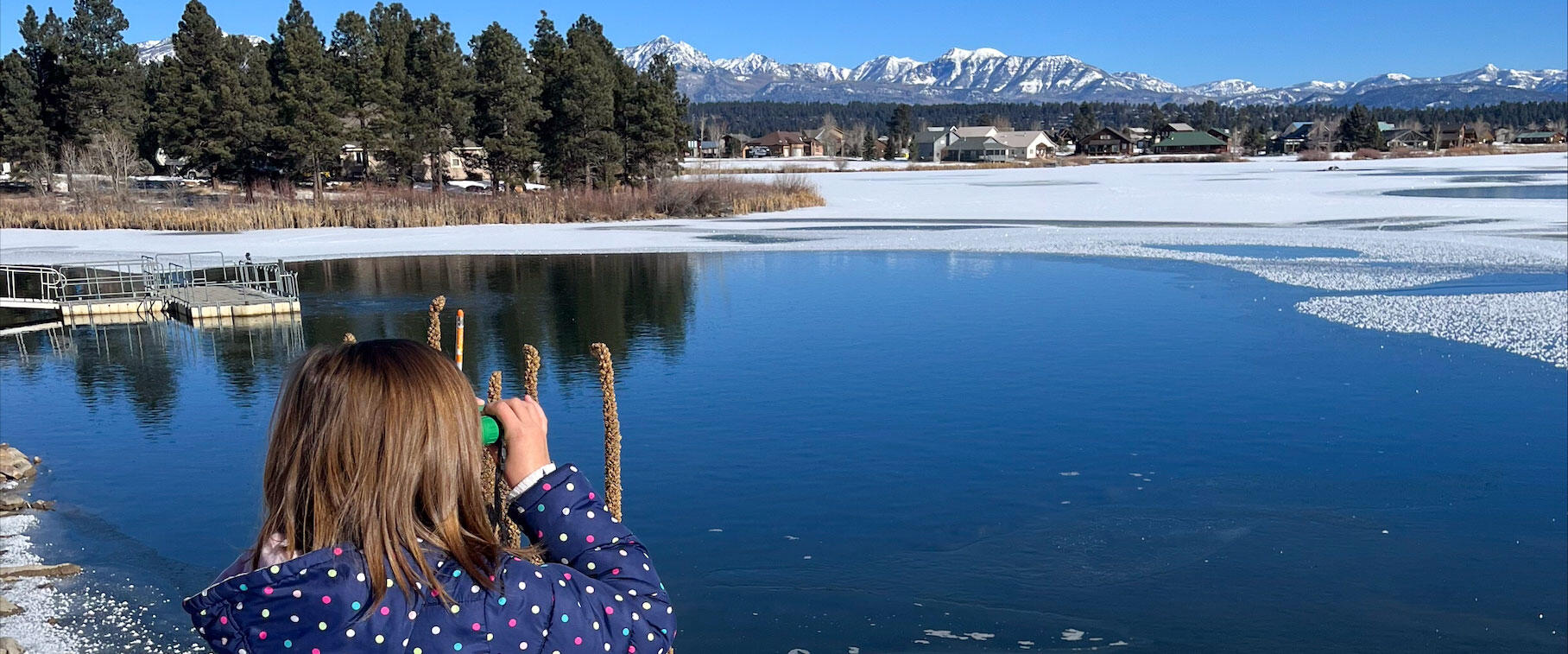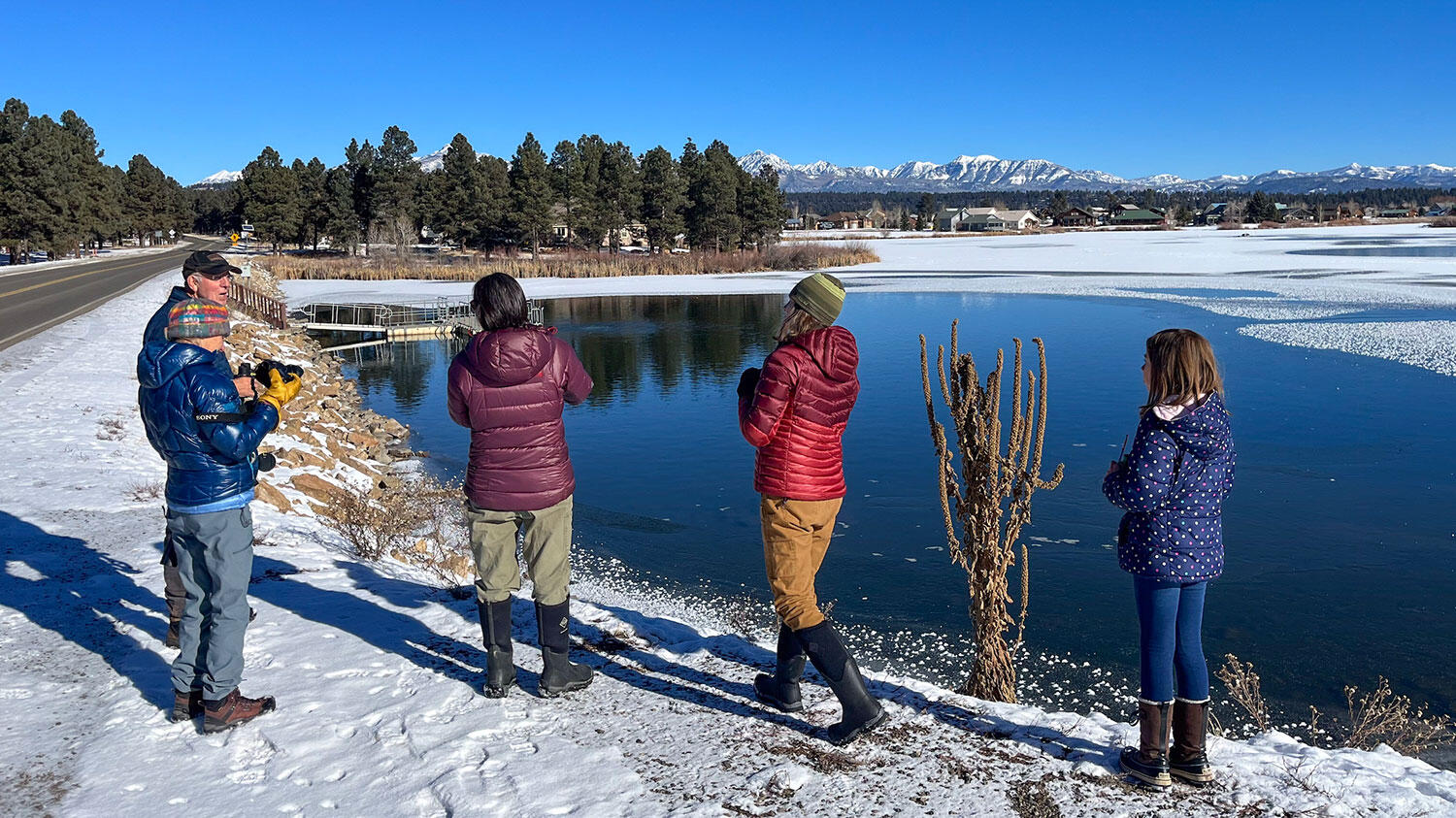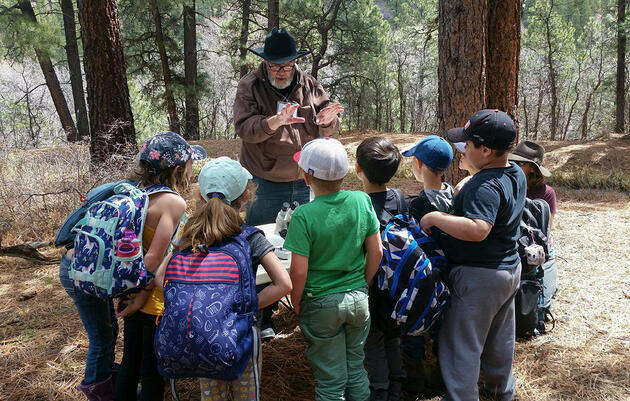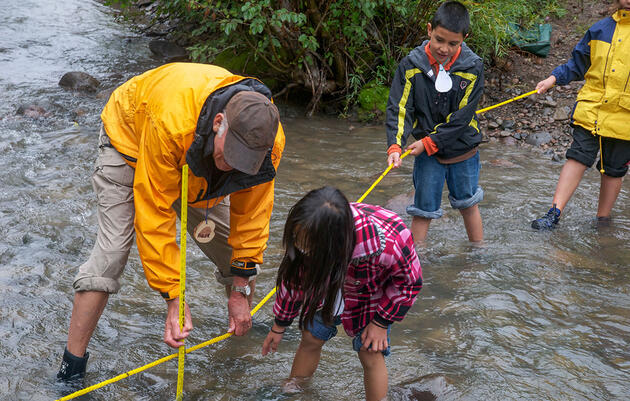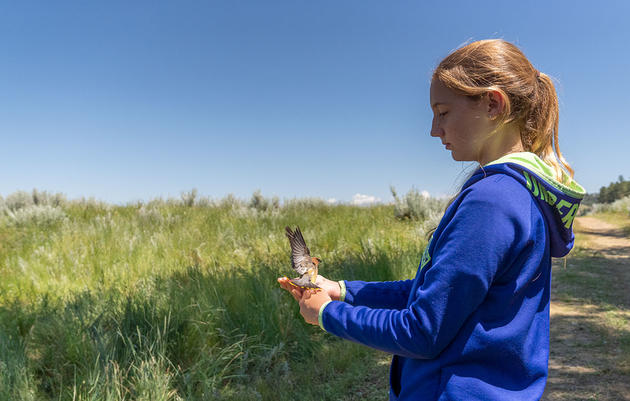Last week, I sat down to interview 10-year-old Sage Merrill-Exton, a fourth grader at Pagosa Springs Elementary. Sage participated in this year’s Christmas Bird Count (CBC) last Saturday, December 17, marking her third year of surveying birds for the oldest bird count in the western hemisphere. Note: some responses have been edited for brevity.
Tell me about your first Christmas Bird Count. What did you see that day and what was it that made it a fun experience?
It was really, really cold! Otherwise, it was a clear morning and easy to see. I went with my dad. We saw a Hooded Merganser! Its hood (the male’s regal crest) was really memorable. It was fun seeing new birds and challenging myself to identify them. I saw some European Starlings…they were so purple! I really like how colorful they are. Also, I saw the Trumpeter Swan on Lake Forest.
That’s great! Oftentimes, our lakes have frozen over by then and our local swan heads to Navajo Reservoir or elsewhere for open water. So you were lucky to see it on count day! What else?
We counted LOTS of Pygmy Nuthatches at neighbor’s feeders.
Why do you keep doing CBCs?
Because every CBC I get to see a new kind of bird. It is fun being involved in it. I get to see connections in our ecosystem. Also, my neighbors now contact me for advice around birds. One neighbor contacted me and asked me to identify a bird in this calendar he made for the new year. I told him it looks like a juvenile Cooper’s Hawk.
Do you and your dad have traditions around the CBC?
We like to get out early while the birds are active. We’ll usually check out the [Lake Forest] in a few spots; there are usually a whole bunch of ducks over there. Then, we like to drive up Martinez Canyon and through our neighborhood, looking for other birds. When we get home, we like to warm up by the fire and drink hot cocoa. Then, we send our list to my grandmother and tell her what we found and she tells us what she saw too.
Do you think you’ve learned other things about birds or science from doing the CBC?
Yes. Birds are a key animal group. It’s important to include them in our world, and not ignore them. Also, they make me pay more attention in my neighborhood. It’s interesting to think about what’s going on in their lives, not just ours.
Do you like to go birding outside of the CBC?
Yeah. I like going birding in national parks. One time, for my eighth birthday, we went to the Monte Vista National Wildlife Refuge. We got to see cranes. Also, there were hawks hovering over the fields. Seeing new species that aren’t in our area is fun. I like to write down everything about them in my field journal. I have a Blue Jay feather in my book from my grandma’s house. We got to see a (male) cardinal in Saguaro National Park. It was really bright!
How did you get into birding?
It was mostly my grandma and my dad. He was outside a lot for work and seeing pretty birds, like Western Tanagers. I thought they were cool and I always wanted to get involved in studying something like birds. When I go to see my grandma, we always go to visit a big lake near her. My favorite animals are turtles and so she always takes me to see the turtles there. And there’s a huge island across the water full of Double-crested Cormorant nests. There are tons of cool ducks there too. Also, my grandpa started sending me these magazines with pictures of birds to help [me] get started. Then I got a bunch of bird books. COVID kind of helped me to get into birds too because I could be outside so much more. My friend and I would get done with our lessons on the computer and then go outside.
What do you think are some actions that people and Audubon can do to help birds?
Making birdhouses, so there are more places birds can nest in. And stop leaving out trash. Birds are everywhere. There’s not any place where there are zero birds.
What do you think would be a good way to get more students your age interested in birds?
I’ve been thinking of, maybe when I get older, going into the elementary school as a mentor. I could go there and give them a birding lesson once every week. One day I could teach them about the parts of a bird. And then another day, I’d ask them to request a favorite bird, and we could study that bird and talk about its field marks and stuff. Also, another idea is making bird stickers. Sometimes I like to make earrings for bake sales. I thought it could be cool to make bird stickers to sell as well.
Closing Thoughts
Considering that birders are often middle-aged and up, Sage is a great (and youthful) addition to our local Weminuche Audubon Society counts and activities. As an educator of birds, personally, it’s a moment of sincere pride and joy to work with someone so interested and invested in birds. In order to secure a healthy future for birds, we need to foster an interest in them. That’s not always easy, as we are prone to taking birds for granted. They move quickly! All it takes is sparking an interest around an initial outing. Treat it like a scavenger hunt! The Christmas Bird Count is an event that often ignites that lifelong interest. If you and your family are interested in getting involved in the Christmas Bird Count, click here to find a count near you!

